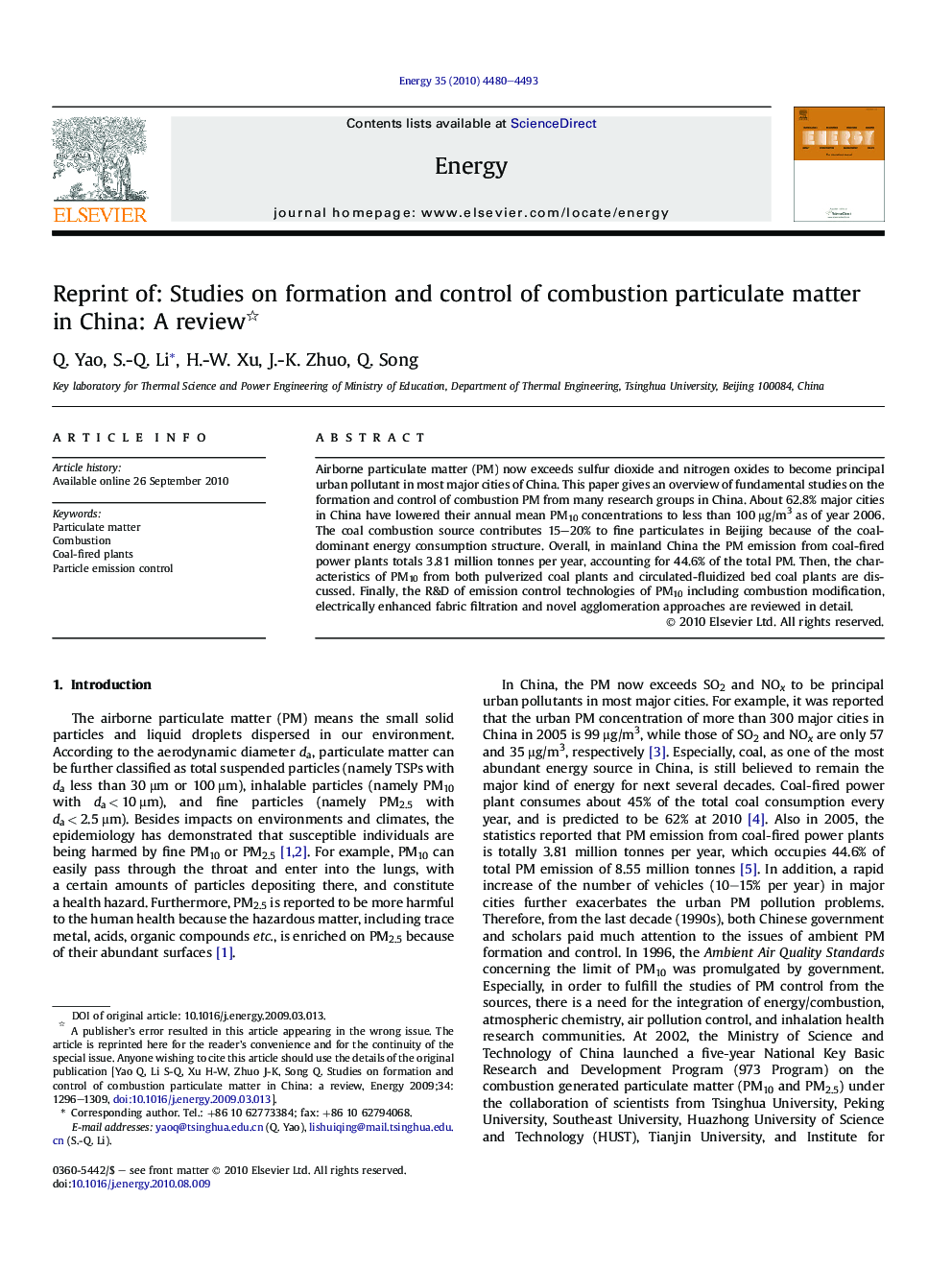| Article ID | Journal | Published Year | Pages | File Type |
|---|---|---|---|---|
| 1734856 | Energy | 2010 | 14 Pages |
Airborne particulate matter (PM) now exceeds sulfur dioxide and nitrogen oxides to become principal urban pollutant in most major cities of China. This paper gives an overview of fundamental studies on the formation and control of combustion PM from many research groups in China. About 62.8% major cities in China have lowered their annual mean PM10 concentrations to less than 100 μg/m3 as of year 2006. The coal combustion source contributes 15–20% to fine particulates in Beijing because of the coal-dominant energy consumption structure. Overall, in mainland China the PM emission from coal-fired power plants totals 3.81 million tonnes per year, accounting for 44.6% of the total PM. Then, the characteristics of PM10 from both pulverized coal plants and circulated-fluidized bed coal plants are discussed. Finally, the R&D of emission control technologies of PM10 including combustion modification, electrically enhanced fabric filtration and novel agglomeration approaches are reviewed in detail.
